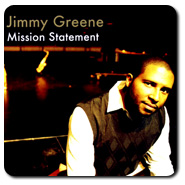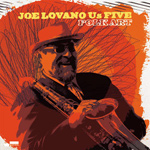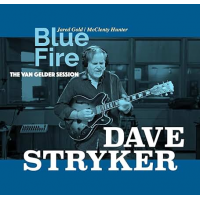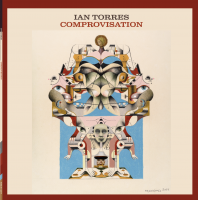Home » Jazz Articles » Multiple Reviews » Julian Lage and Jimmy Greene: The Delight in Sharing
Julian Lage and Jimmy Greene: The Delight in Sharing
Switch back to 2009 and you find yourself in a similar, almost deja vu scenario as history repeats itself with Burton's newfound honour-roll guitarist Julian Lage, and Silver's former gunslinging saxophonist Jimmy Greene making their mark with a pair of deserving releases. That said, although it is now their turn to put their names up on the marquee, both still owe much to the mentorship (and the opportunity) those illustrious statesmen provided.
Making good use of Seneca's ancient wisdom that says there is no delight in owning anything unshared, intergenerational banding fortunately remains the norm in jazz. Indeed, thanks to such mentoring leaders as Burton and Silver, jazz has resisted thus far the pitfalls observed in those genres where pubescent looks—or, inversely, liver spots and bald spots—become backdoor passes (or tickets to retirement, case depending) to mainstream acceptance. Although many young lions' horns blow rather conservatively compared to many free jazz-influenced sexagenarians, older bandleaders have been quick to point out the refreshing enthusiasm and renewed creativity younger players have brought to their sets. Listening to Sounding Point and Mission Statement, it becomes quite clear that both Lage and Greene fit this distinguished category.
 Julian Lage
Julian Lage Sounding Point
EmArcy
2009
Somewhat the continuation of the Charlie Christian-Jim Hall-Pat Metheny lineage, Lage's silken tone and picking resound deep in the jazz guitar heritage. On "Tour One," a duet with pianist Taylor Eigsti, as well as against the open, acoustic bass/percussion backdrops that Jorge Roeder and Tupac Mantilla paint for him during his solo on "Lil' Darlin,'" the Santa Rosa, California native breathes life into the instrument's vocabulary. But it is in those vignettes featuring bluegrass monarchs, mandolinist Chris Thile and banjoist Bela Fleck which pepper the disc that Lage's refreshing, hearty approach to composition, guitar playing and record making most fully come together.
Two of those tracks, "The Informant" and "Long Day Short Night," really bring forth Lage's technique on the acoustic, as does the daring inclusion of the Chet Atkins-reminiscent "Alameda." The album's two solo pieces, "Familiar Posture" and "Constructive Rest," also features some superbly performed stylings as Lage is found tapping into some engaging voicing and arranging ideas.
Visit Julian Lage on the web.
 Jimmy Greene
Jimmy Greene
Mission Statement
Razdaz
2009
Like Lage, Greene favours varying instrumentation and textures to set his award-winning compositions. Sounding more adventurous on soprano than he does on tenor—such as when he contrasts guest vibraphonist Stefon Harris' motivic solo on "Revelation" with Brecker-like, chromatic lines and intervals—his phrasing sweeps across the rhythm section's swooping, shifty maneuvering with aplomb and finesse.
In fact, the rhythm section deserve much praise for elevating Greene's creations to near perfection. Consisting of drummer Eric Harland, bassist Reuben Rogers and pianist Xavier Davis—Lage Lund, yet another another star in the making, round things up on guitar on some tracks—the unit veers between tight, steady backings and packed, punched kicks with Swiss clock-like precision, even conjuring up a spontaneous middle section in "Mr.Octopus," the program's perilous jaunt. Slower, more measured compositions like the touching ballad "In Nelba's Eyes," "Fathers and Sons" and the elusive "Love In Action" balance the album's sound, which remains that of a superior tunesmith and sensitive yet buoyant blower. Though microscopically minor, the sole negative point is the use of fade outs on a few tracks.
As the similarities are numerous—both in terms of musical phrasing and career development—between both Metheny and Lage, and Brecker and Greene, and considering also the resounding success these much-loved artists still enjoy today after nearly 40 years on the scene, jazz fans may remain safe in the knowledge that the music is far from its demise. With many more recordings and projects ahead of them, Lage and Greene may just prove to cognoscenti that they are the "next thing," insignificant a concept though that is in the greater scheme of things.
Visit Jimmy Greene on the web.
Tracks and Personnel
Sounding Point
Tracks: Clarity; All Purpose Beginning; Familiar Posture; The Informant; Peterborough; Long Day, Short Night; Quiet, Through and Through; Lil' Darlin'; Tour One; Alameda; Constructive Rest; Motor Minder; Encore: All Blues.
Personnel: Julian Lage: guitar; Ben Roseth: saxophone (1, 2, 5, 7, 12); Aristides Rivas: cello (1, 2); Jorge Roeder: bass (1, 2, 7, 8, 12); Tupac Mantilla: percussion (1, 2, 8, 12); Chris Thile: mandolin (4, 6, 10); Bela Fleck: banjo (4, 6, 10); Taylor Eigsti: piano (9, 13).
Mission Statement
Tracks: Mission Statement; Fathers and Sons; Trials; Love In Action; Revelation; In Nelba's Eyes; YeahYouRight; Mr.Octopus; Ana Grace; Give Thanks.
Personnel: Jimmy Greene: saxophones; Reuben Rogers: bass; Xavier Davis: piano, Rhodes; Lage Lund: guitar; Eric Harland: drums; Stefon Harris: vibraphone (5)
Tags
PREVIOUS / NEXT
Support All About Jazz
 All About Jazz has been a pillar of jazz since 1995, championing it as an art form and, more importantly, supporting the musicians who make it. Our enduring commitment has made "AAJ" one of the most culturally important websites of its kind, read by hundreds of thousands of fans, musicians and industry figures every month.
All About Jazz has been a pillar of jazz since 1995, championing it as an art form and, more importantly, supporting the musicians who make it. Our enduring commitment has made "AAJ" one of the most culturally important websites of its kind, read by hundreds of thousands of fans, musicians and industry figures every month.
















